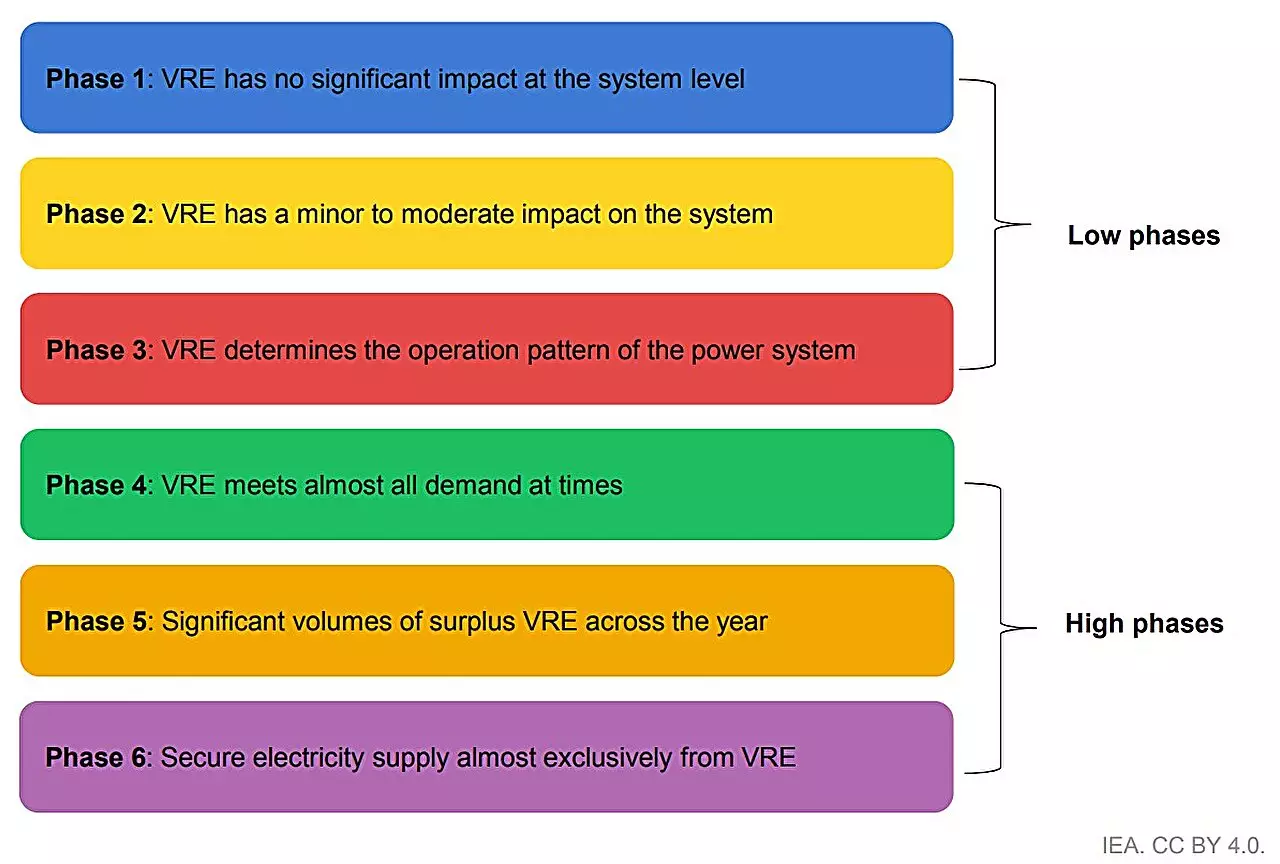As the global energy landscape shifts towards sustainability, solar photovoltaic (PV) and wind energy have experienced prolific growth in recent years. According to a comprehensive report released by the International Energy Agency (IEA), these renewable energy sources not only present an opportunity for decarbonization but also embody significant challenges in their integration into existing power systems. With a doubling of installed capacity from 2018 to 2023, the urgency for effective integration has never been clearer. This article delves into the critical need for enhanced measures to integrate solar and wind energy, analyzing the current trends and future implications for global energy infrastructures.
The rapid expansion of solar and wind energy capacity can be attributed primarily to ambitious government policies and declining costs associated with renewable technology. As of now, wind and solar collectively represent about two-thirds of the decrease in carbon dioxide (CO2) emissions necessary to achieve net-zero targets by 2050. The IEA’s report emphasizes that, despite this impressive growth, there remains a pressing need to smooth the integration of these variable renewable energy (VRE) sources into national power systems. Not only do successful integration measures promise increased efficiency and reliability, but delays could reduce potential output from these energies significantly—by as much as 15% by the year 2030.
The continued success of solar and wind energy hinges on robust policy frameworks that encourage their incorporation into the broader energy strategy. The report highlights that regions currently relying on low shares of these renewable sources could contribute to two-thirds of the projected generation growth by 2030. Notably, this growth can often occur without necessitating fundamental systemic overhauls. Established best practices, such as enhancing the flexibility of existing assets and improved forecasting techniques, can effectively address some of the challenges posed by integrating higher percentages of variable renewables.
However, the realization of these policies requires foresight and adaptive measures to prepare for increased reliance on renewables. It is not merely about expanding capacity; intelligent integration into existing infrastructures is essential to ensure that energy continues to flow reliably and efficiently.
Taking cues from frontrunners like Denmark, Ireland, South Australia, and Spain, the report outlines how these nations have successfully tackled the complexities associated with increased renewable penetration. Key to their successes has been the development of advanced storage solutions and innovative technologies that allow for the management of the inherent variability of solar and wind outputs. They demonstrate that it is possible to integrate higher levels of variable renewables into power systems without sacrificing reliability or efficiency.
These case studies point to a broader lesson: technological readiness is one piece of the puzzle. While many solutions to the emerging challenges are either advanced or nearing maturity, their effective implementation often hinges on established policies and regulatory frameworks rather than on brand-new technological innovations.
To fully embrace the potentials of solar and wind energy, a fundamental rethinking of how power systems are operated is required. The report underscores that integration efforts must evolve to meet the expectations of a greener future. The conventional methodologies of planning and operating energy systems need to be reshaped to account for the intermittent nature of renewable resources.
Proactive global measures, emphasizing flexibility and stability, will be critical as we approach the next decade of renewable energy adoption. As countries continue to drive energy transitions forward, the collective knowledge gained from both the challenges and successes experienced thus far will form the bedrock of future strategies.
The explosive growth of solar PV and wind energy presents both an incredible opportunity for the global energy transition and significant challenges regarding integration into existing power infrastructures. Policymakers, energy leaders, and stakeholders must prioritize effective integration measures as they aim for sustainable and reliable energy systems. The lessons compiled in the IEA report offer critical insights—achieving a successful energy transition is not merely about capacity; it requires a paradigm shift in how we envision and implement power systems moving forward. The urgency for action is clear: without concerted efforts in integration, we risk undermining the progress made in the renewable energy sector and jeopardizing our climate goals.

